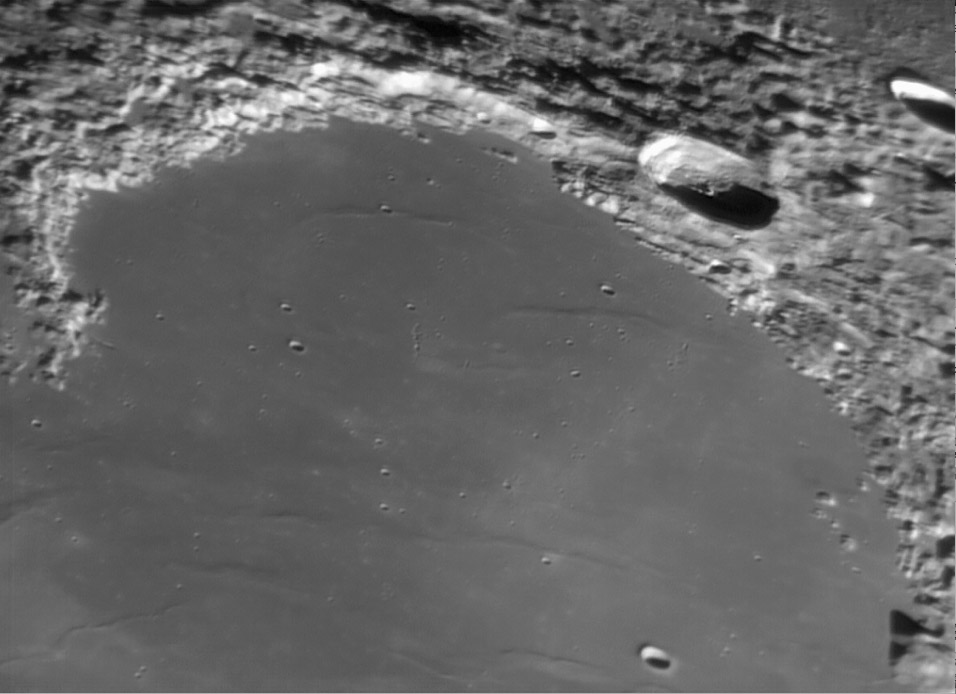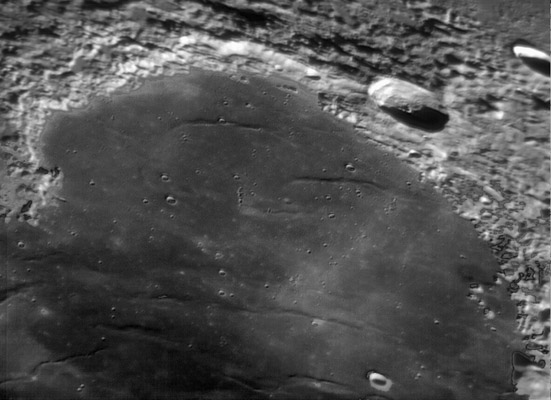
image by Christian Arsidi, Vernouillet, France; north approximately to right.
Arched like a rainbow, the Jura Mountains halfway encircles Sinus Iridum. Christian’s extreme closeup focuses attention on the mare-covered floor showing a few mare ridges and scattered small craters. My strong enhancement of the floor (small image below with artifacts on right edge) brings out albedo variations that add to the story. The bright line of tiny pits crossing diagonally on the right side is nearly radial to Copernicus and thus is probably a secondary crater chain/ray from that crater. The cause of the more amorphous bright area right of the ray is unknown. Another albedo feature brought out by the enhancement is the bright area along the left edge of the floor. I don’t think this is an artifact because it is fairly broad and connects to the wider light zone at the 11 o’clock position. A similar piece of light material is just above the tiny mountain island near the top of the floor. Could this be remanants of an earlier mare unit that has otherwise been nearly completely covered by younger maria? Or is is perhaps bright debris that has slid down the Jura Mountains onto the floor? A darkish rhombus-shape near the isolated hills at the right edge of the floor is strange - since it is adjacent to the subtle swell I wonder if it is related to that feature? Finally, there is a very rectangular edged dark-light boundary in the lower left corner. This looks very much like an artifact where images were mis-mosaicked, but Clementine shows a less regular but consistent albedo boundary so it must be real!
Technical Details:
Dec 20, 2007. Celestron 14 ” (355mm) + Titan 50 Losmandy mount + Barlow 2x + DMK 41AF02 camera, with 15 images a second, treatment with Iris.
Related Links:
Rükl plate 10
More of Christian’s images
Yesterday's LPOD: Splattered
Tomorrow's LPOD: Welcoming a New LPOD Year
COMMENTS?
Register, Log in, and join in the comments.




